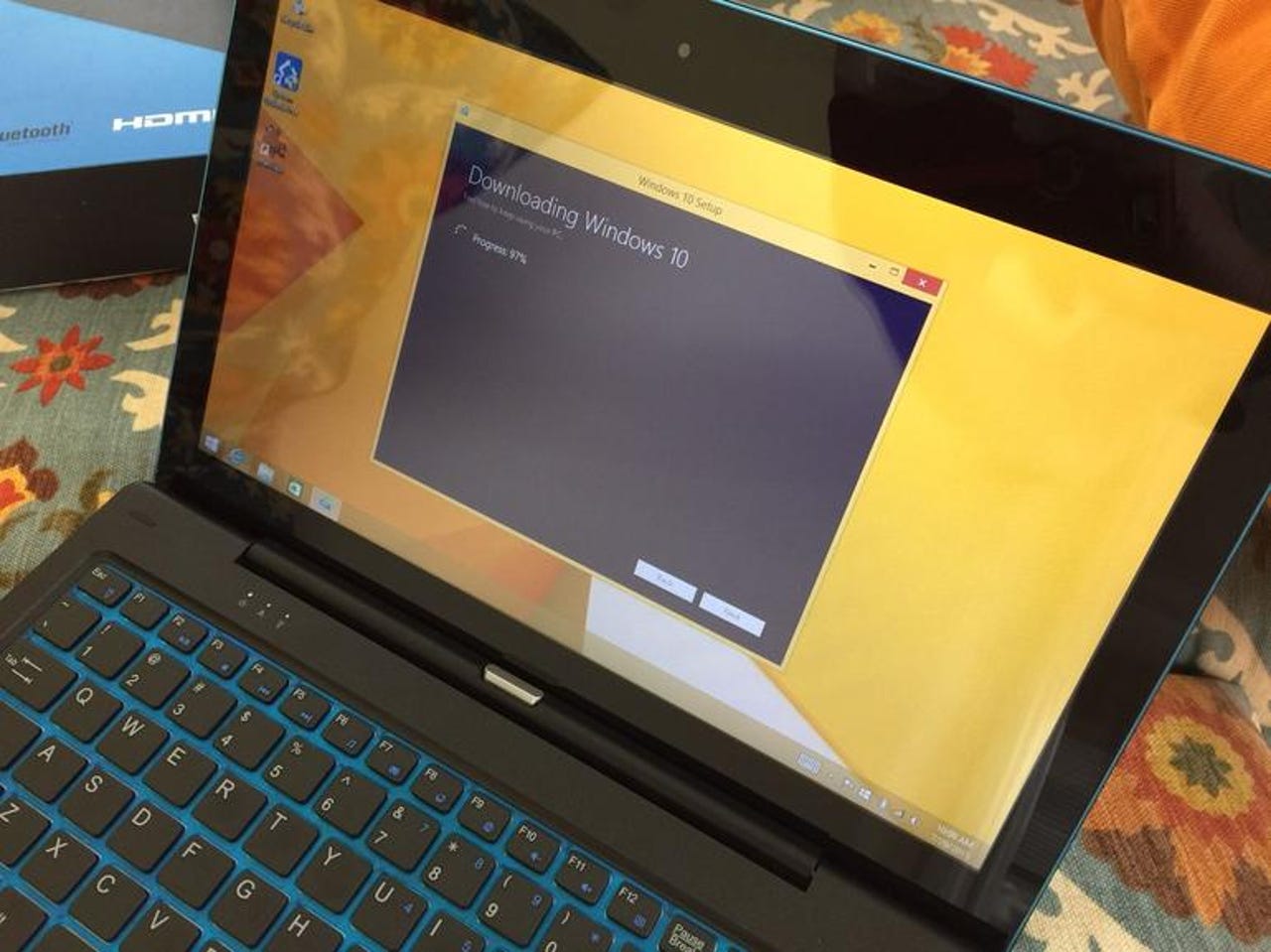Windows 10 usage share continues to grow, but enterprise stays on sidelines

In Presidential politics and modern computing, everything's a horse race. For political junkies, it's "Who's ahead in New Hampshire?" For anyone trying to make business decisions based on the future of the PC, it's "How many people are using my favorite system software?"
Windows 10
The answer to either question, of course, is always, "It depends." It depends on the sample population, the sample size, and how the question is being asked. And ultimately, the only answer that matters comes from those who vote and those who buy.
I've been looking at multiple data sets lately, all of them interesting, all of them offering an imperfect glimpse of one part of a very large installed base. But in total, they tell a fascinating story about the trajectory of traditional (desktop and laptop) computing.
Actually, make that three stories, because with an installed base of 1.5 billion PCs, the picture is far too complicated to be reduced to a single bar chart (although that's what seems to happen to the tech media on the first day of each month, when analytics companies do their data dumps for the previous month).
For this story, I've gathered the latest data, covering the entire month of January 2016, from Net Market Share, StatCounter Global Stats, and the United States Government's Digital Analytics Program (DAP). For the first two, I removed non-Windows operating systems from the data set and then normalized the results so that all the comparisons show the share for each version of Windows based on a population of all Windows PCs.
First up, the global installed base of Windows PCs. Regardless of whose numbers you count, Windows 10 is well into double-digit percentages among Windows PCs, with usage shares at 13.1 percent (NetMarketShare) and 16.0 percent (StatCounter) after six full months of release. Both of those numbers are consistent with Microsoft's announcement that it counted 200 million active Windows 10 PCs as of early January.
The exact numbers vary, but three different analytics sources confirm Windows 10 is now a strong second to Windows 7
Meanwhile, the share for every other Windows version is dropping, with Windows 7 still dominant at between 54.8 percent and 57.9 percent of all Windows PCs worldwide. Windows 8.1 usage is in decline as well, thanks to two factors: the supply of new PCs being purchased by consumers and small businesses is increasingly made up of devices preloaded with Microsoft's new OS, and those running relatively new Windows 8.1 PCs are taking advantage of the free upgrade to Windows 10.
I've expressed skepticism over the accuracy of either company's monthly counts, as they tend to fluctuate in ways that make no sense. (See "Net Market Share vs. StatCounter: Whose online measurements can you trust?" and "Weird science: How shaky web usage reports distort our view of tech markets" for more details.)
Still, both trend lines are unmistakable.
Next, a look at the massive U.S. Government Digital Analytics Program, which measures hundreds of millions of visits per month to its public websites and then publishes those raw numbers. There's no statistical manipulation, as with the commercial analytics services. (For a discussion of what's in the DAP numbers, see the note at the end of this earlier article: "U.S. Government data shows Windows 10 usage climbing as Windows 7 share drops sharply.")
From September to January, the percentage of PCs running Windows 10 practically doubled, to just a sliver under 18 percent. Meanwhile, Windows 7 continues its dominance, declining only slightly in that same period.
I found it interesting that both NetMarketShare and StatCounter see a large proportion of PCs still running Windows XP (12.6 and 9.4 percent, respectively), while the sample from the U.S. DAP shows a much smaller share of XP usage, at a mere 3.2 percent.
One possible explanation for the disparity is that those worldwide stats include a massive installed base of machines in China and other emerging nations running pirated copies of Windows XP. By contrast, visitors to the U.S. Government websites are predominantly (but not exclusively) from the United States, where piracy is much less prevalent.
Finally, there's Windows in the enterprise. None of the metrics I've looked at here measure the installed base of Windows in the enterprise, which is where Microsoft makes a disproportionate share of its revenue from Windows with Volume License upgrades.
So I was intrigued last week to speak with Doron Gordon, CEO of Samanage, an IT asset management company with a customer base of more than 1000 large companies worldwide, representing an average of more than 1000 seats per organization.
Using telemetry data from those millions of agents running on PCs and Macs, Samanage says Windows 7 is still the top dog among its enterprise customers. Here are the top five operating systems in use on those corporate PCs:
- Windows 7 Professional 40.3 percent
- Windows 7 Enterprise 21.4 percent
- OS X (all versions) 8.1 percent
- Windows XP Professional 7.3 percent
- Windows 8.1 Enterprise 4.3 percent
That adds up to a bit more than 81 percent.
Not surprisingly, Windows 10 isn't in that Top 5 list, and it's not likely to get there soon, given the conservative nature of enterprise deployments. But Samanage provides one piece of data that suggests those deployments are in the works. According to the company, 62.4 percent of its enterprise customers have at least one managed PC running Windows 10, a strong indicator that a majority of enterprise customers have begun Windows 10 pilot programs in the first six months after its release.
